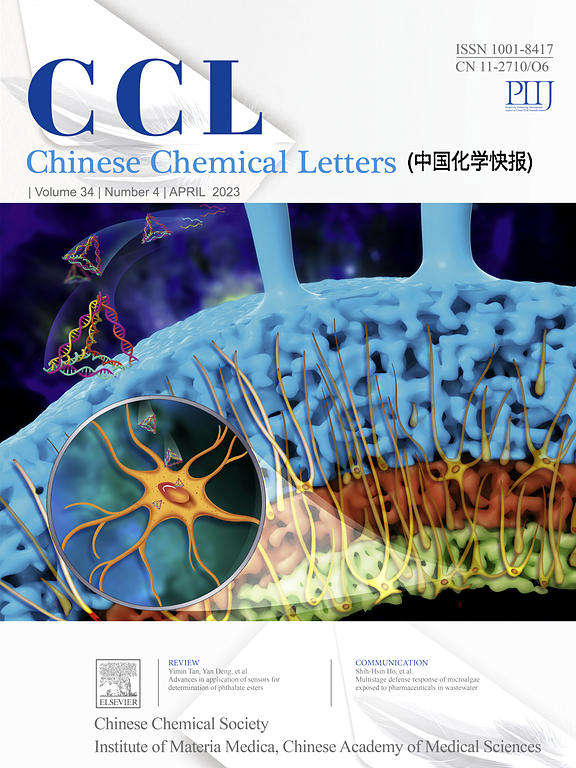Molecular iron-oxo clusters ameliorate sepsis via enhancing humoral immune response
IF 8.9
1区 化学
Q1 CHEMISTRY, MULTIDISCIPLINARY
引用次数: 0
Abstract
Metal-based antimicrobial materials have been extensively studied and applied over decades. While these materials are notably characterized by their superior antibacterial performance and low propensity to induce drug resistance, critical limitations such as inherent cytotoxicity, poor solubility, and instability in aqueous solution remain significant challenges requiring systematic optimization. In this study, we synthesized water-soluble molecular iron-oxo clusters (MIC) with excellent biosafety and stability of aqueous solution. Our findings demonstrate that MIC exhibits marked therapeutic efficacy in cecal ligation and puncture induced sepsis models, a critical validation given sepsis' etiology as a life-threatening infection mediated systemic inflammatory syndrome. MIC combats bacteria by enhancing humoral immune responsiveness. MIC significantly improved the survival rate, reduced bacterial burden, stabilized body temperature, and modulated cytokine profiles in mice with sepsis. Further investigations revealed that MIC promotes B cells proliferation and oxidative phosphorylation, and mitigates mitochondrial damage and apoptosis in B cells, suggesting its role in modulating cellular metabolism. RNA sequencing analysis demonstrated that MIC exerts its effects by influencing key pathways involved in humoral immunity, inflammatory responses, and metabolic adaptation. These findings establish MIC as a novel therapeutic agent for regulating immune responses in sepsis, providing innovative strategies to improve recovery from this life-threatening condition.

铁氧分子簇通过增强体液免疫反应改善败血症
几十年来,金属基抗菌材料得到了广泛的研究和应用。虽然这些材料具有优异的抗菌性能和较低的耐药倾向,但其固有的细胞毒性、较差的溶解度和在水溶液中的不稳定性等关键局限性仍然是需要系统优化的重大挑战。在本研究中,我们合成了具有优异生物安全性和水溶液稳定性的水溶性铁氧分子簇(MIC)。我们的研究结果表明,MIC在盲肠结扎和穿刺诱导的脓毒症模型中表现出显著的治疗效果,这是一个关键的验证,因为脓毒症的病因是一种危及生命的感染介导的全身性炎症综合征。MIC通过增强体液免疫反应来对抗细菌。MIC显著提高了脓毒症小鼠的存活率,减少了细菌负担,稳定了体温,并调节了细胞因子谱。进一步研究发现,MIC促进B细胞增殖和氧化磷酸化,减轻B细胞线粒体损伤和凋亡,提示其在调节细胞代谢中的作用。RNA测序分析表明,MIC通过影响涉及体液免疫、炎症反应和代谢适应的关键途径发挥作用。这些发现确立了MIC作为一种调节败血症免疫反应的新型治疗剂,为提高这种危及生命的疾病的康复提供了创新的策略。
本文章由计算机程序翻译,如有差异,请以英文原文为准。
求助全文
约1分钟内获得全文
求助全文
来源期刊

Chinese Chemical Letters
化学-化学综合
CiteScore
14.10
自引率
15.40%
发文量
8969
审稿时长
1.6 months
期刊介绍:
Chinese Chemical Letters (CCL) (ISSN 1001-8417) was founded in July 1990. The journal publishes preliminary accounts in the whole field of chemistry, including inorganic chemistry, organic chemistry, analytical chemistry, physical chemistry, polymer chemistry, applied chemistry, etc.Chinese Chemical Letters does not accept articles previously published or scheduled to be published. To verify originality, your article may be checked by the originality detection service CrossCheck.
 求助内容:
求助内容: 应助结果提醒方式:
应助结果提醒方式:


